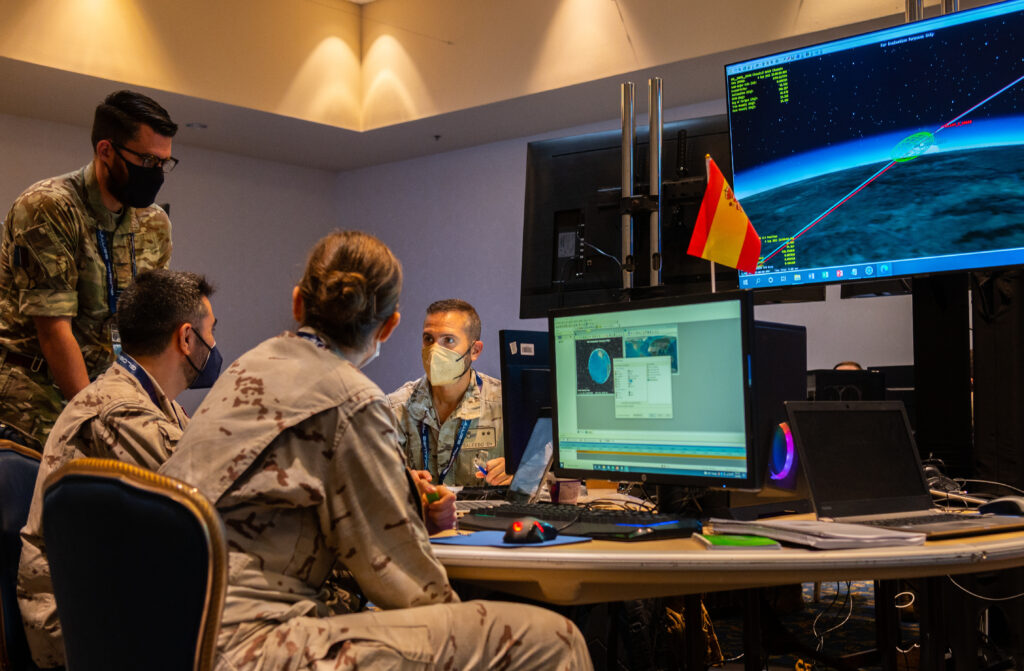Orbits
U.S. Space Situational Awareness Activities
Spain signs up as 25th nation in Artemis pact


Officials from NASA and the U.S. State Department gathered in Madrid Tuesday as Science and Innovation Minister Diana Morant signed off for Spanish agreement to the Artemis Accords, marking the 25th nation to join the U.S.-led treaty to govern conduct in orbit and beyond.
November Space Council Meetings Could Shape Commercial Regulations


The National Space Council asked for comment on new commercial space systems and how the commercial space sector could be regulated during a pair of online meetings set for November. The council wants input from industry and the public. The move is part of a Biden Administration push to deal with issues including crowded orbits and the safety of space tourists.
Rivals Launch Military Satellites Amid U.S.-led Space Defense Drills


A flurry of military and intelligence satellite launches by rival powers this month came as the United States and two dozen partner nations wrapped up the largest global space defense wargame in history.
Russia launched what some leaders have described as a spy satellite for Iran and its own on-orbit snooping satellite Cosmos-2558, which is circling Earth in an orbit conspicuously close to a recently launched U.S. National Reconnaissance Office satellite, a Netherlands researcher confirmed.
2016 – U.S.: ATRR, GSSAP, ANGELS, and SBSS – Snapshot
The U.S. Air Force (USAF) continued adding space situational awareness (SSA) satellites to the nation’s operational military SSA satellite inventory during 2016. By the end of the year, seven satellites made up the nation’s unclassified SSA fleet. These were the Automated Navigation and Guidance Experiment for Local Space (ANGELS), Advanced Technology…
2015 – U.S.: ATRR, GSSAP, ANGELS, and SBSS – Snapshot
The majority of known space-based SSA satellites are run by the U.S. Air Force’s 1st Space Operations Squadron (1 SOPS) from Schriever Air Force Base, Colorado.
2014 – U.S.: GSSAP, ANGELS, and SBSS
In February 2014, the USAF took the unusual step of publicly announcing the existence of classified space situational awareness satellites. In the initial announcement, General William Shelton stated that the Geosynchronous Space Situational Awareness Program (GSSAP) satellites will provide more accurate locations and data about satellites and perhaps debris orbiting the Earth. The first ## of ## GSSAP satellites were launched to GEO in July 2014, and the USAF intends to launch ## more satellites in 2016.
2013 – U.S.: SBSS
The U.S. Space Based Surveillance System (SBSS) satellite, launched in 2010, uses an optical sensor to detect objects in space as it orbits around Earth. It has an expected lifespan of 5.5 years and was designed as a pathfinder for a proposed series of similar satellites.
2010 – U.S.: SBSS – Snapshot
In 2010, the United States launched the first Space Based Space Surveillance satellite (SBSS-1) for its Space Surveillance Network. From its LEO orbit, SBSS-1 supplements ground-based equipment that tracks more than ## objects ## centimeters (## inches) or larger orbiting Earth. Its vantage point in space means that its observations of other objects in space are not affected by weather, lighting, or distortion that can be caused by the Earth’s atmosphere. This enables more accurate and timely information regarding objects’ orbital paths, thus allowing for earlier warnings of potential spacecraft collisions.
2010 – U.S.: SBSS – Snapshot
Another notable launch in 2010 was the first Space Based Space Surveillance satellite (SBSS-1) for the U.S. Space Surveillance Network. This branch of U.S. Strategic Command is tasked with detecting, identifying, and tracking space objects in order to provide true situational awareness in space. From its LEO orbit, SBSS-1 will supplement ground-based equipment that tracks more than ## objects orbiting Earth. Its vantage point from space means that its measurements are not subject to weather, lighting, or distortion that can be caused by the Earth’s atmosphere.